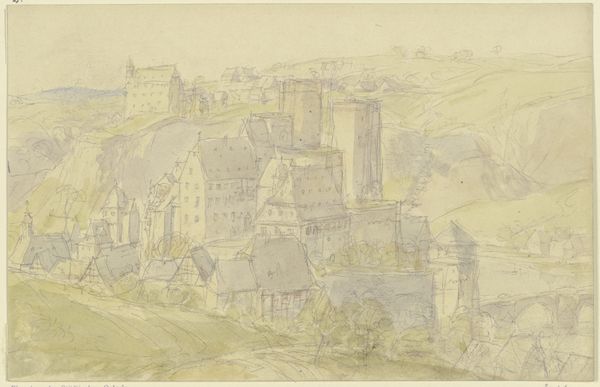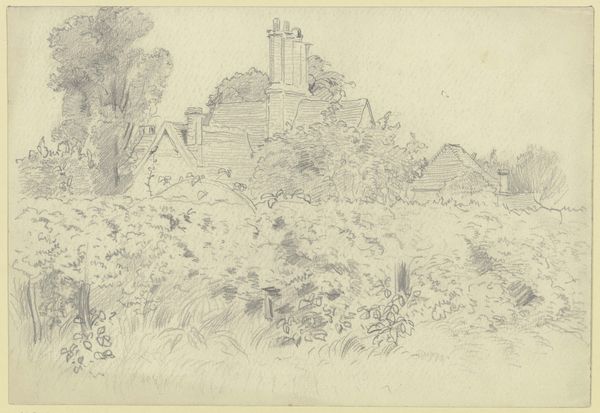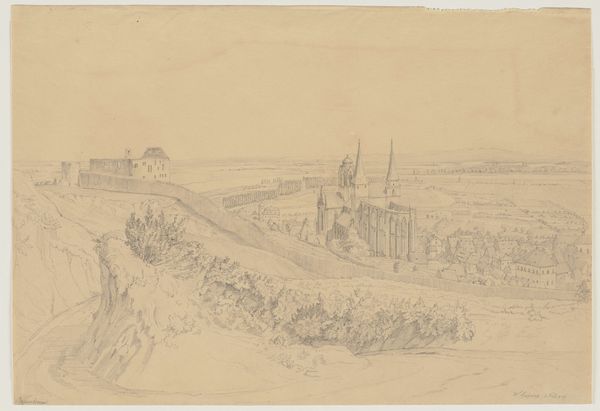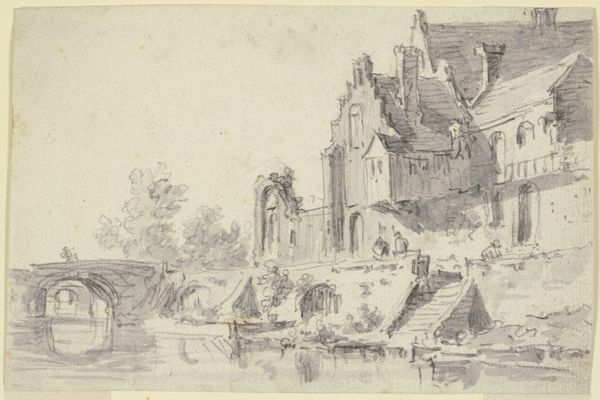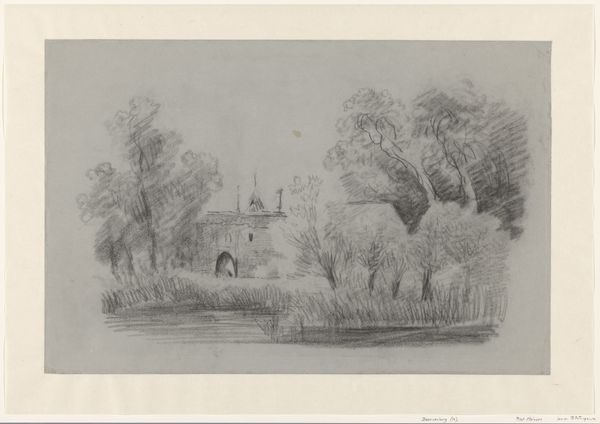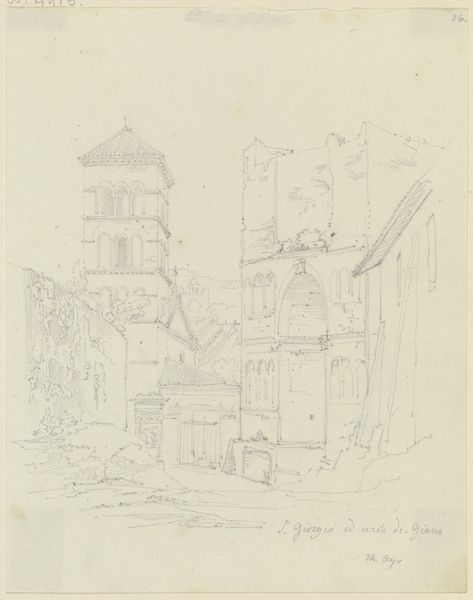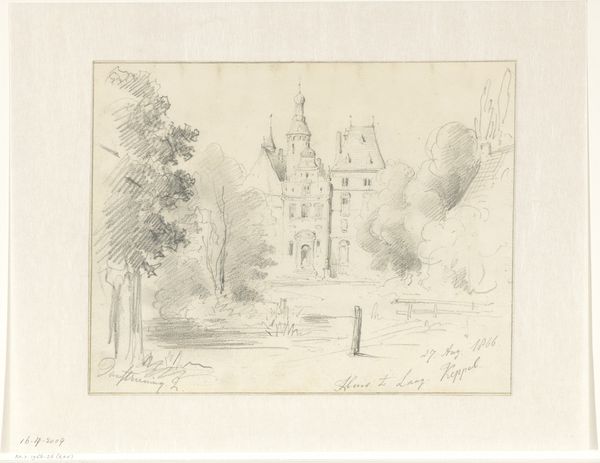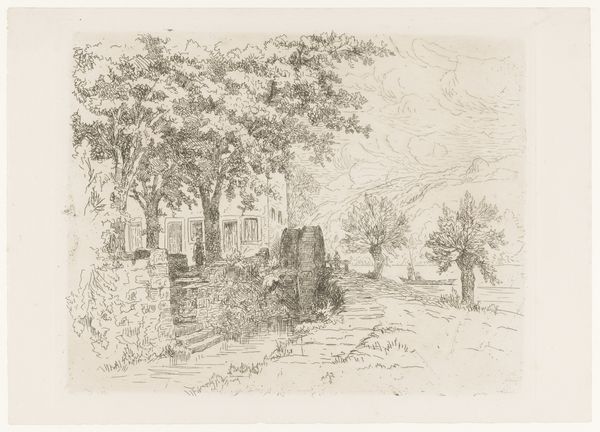
drawing, print, watercolor, architecture
#
drawing
#
16_19th-century
# print
#
landscape
#
etching
#
watercolor
#
watercolour illustration
#
watercolor
#
architecture
Copyright: Public Domain
Curator: Peter Becker created this work, "The cathedral in Wetzlar," sometime in the 19th century. It combines etching and watercolor. Editor: The mood is subdued, almost dreamlike, isn’t it? The washes of colour seem to dissolve the cathedral into the landscape. Curator: The cathedral is certainly a key focal point. However, let’s consider how the imagery might serve the artist’s broader social and cultural goals. How does depicting a prominent church structure influence our understanding of power and community? What role does the Wetzlar cathedral play in shaping local identity, and how might this representation of its architecture reinforce or challenge existing social hierarchies? Editor: I see the architecture of the cathedral, yes, but it seems purposefully softened. The blending of mediums, watercolour and etching, creates a very pastoral, Romantic impression. It doesn’t seem like a challenge to authority, more like a contemplation. Curator: I agree that the artwork expresses a Romantic vision of nature and architecture. However, the social context in which such artworks were created involved intricate relationships between religious institutions, local governance, and artistic expression. Exploring the role of art in visualizing such historical power dynamics remains a crucial approach to better appreciate the political charge. Editor: I see it more as personal reflection than a political statement. What I take away is that balance of the man-made and nature, with one informing the other. The earthy tones reflect nature but there's also clearly human artifice at play, making you consider your place between those poles. Curator: That's insightful. Perhaps we are seeing how art is a stage where individual emotions encounter society’s narratives. Art isn't just what it represents; it's an arena for shaping ideas and opinions about society, gender and class, intentionally or otherwise. Editor: So while I initially viewed this landscape as primarily an aesthetic rendering, considering these contextual layers definitely enriches my appreciation of it. Curator: Indeed. By investigating its cultural and historical implications, we see how it acts not just as documentation but an active voice in public conversation.
Comments
No comments
Be the first to comment and join the conversation on the ultimate creative platform.
